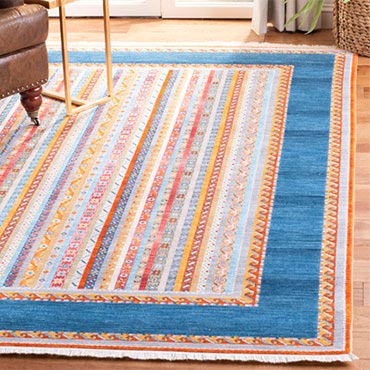

 Bokhara Rugs are traditional handwoven carpets originating from the Bokhara region of Uzbekistan, known for their striking geometric patterns and rich, deep colors. Typically crafted from high-quality wool, these rugs feature intricate designs, often showcasing repetitive motifs such as medallions and tribal symbols that reflect the cultural heritage of the region. Bokhara rugs are celebrated for their durability, dense pile, and the craftsmanship that goes into their creation, making them a timeless choice for adding warmth and sophistication to various interior styles. Their classic patterns and enduring appeal make them a popular choice for both traditional and modern spaces.
Bokhara Rugs are traditional handwoven carpets originating from the Bokhara region of Uzbekistan, known for their striking geometric patterns and rich, deep colors. Typically crafted from high-quality wool, these rugs feature intricate designs, often showcasing repetitive motifs such as medallions and tribal symbols that reflect the cultural heritage of the region. Bokhara rugs are celebrated for their durability, dense pile, and the craftsmanship that goes into their creation, making them a timeless choice for adding warmth and sophistication to various interior styles. Their classic patterns and enduring appeal make them a popular choice for both traditional and modern spaces.
Disclaimer: The information provided in this article is for general informational purposes only. While we strive to ensure the accuracy and reliability of the information presented, we make no warranties, express or implied, about the completeness, accuracy, reliability, suitability, or availability with respect to the content. Any reliance you place on such information is strictly at your own risk. We recommend consulting with professionals for specific advice tailored to your project’s needs, particularly regarding building codes, regulations, and product specifications.
Under no circumstances shall we be liable for any loss or damage, including without limitation, indirect or consequential loss or damage, arising from the use of, or reliance on, the information provided in this article.
